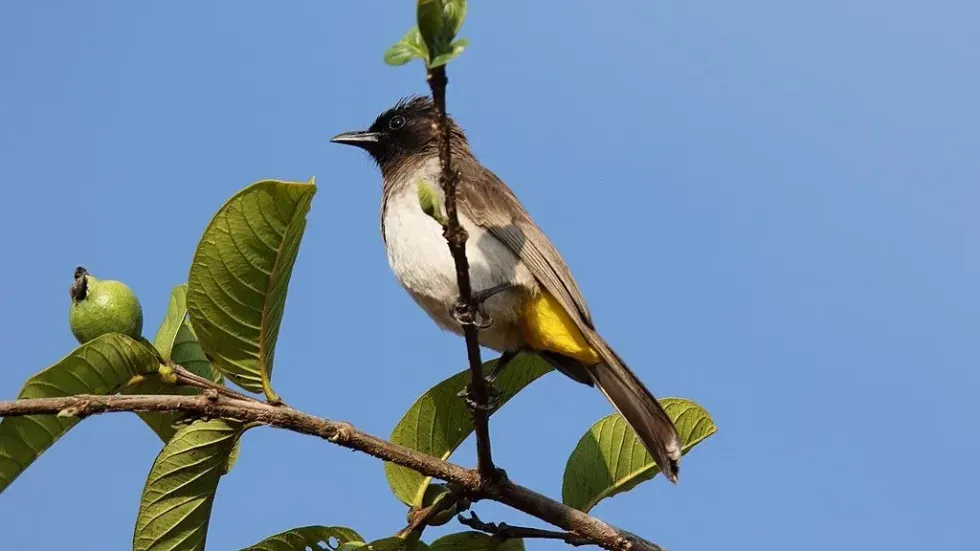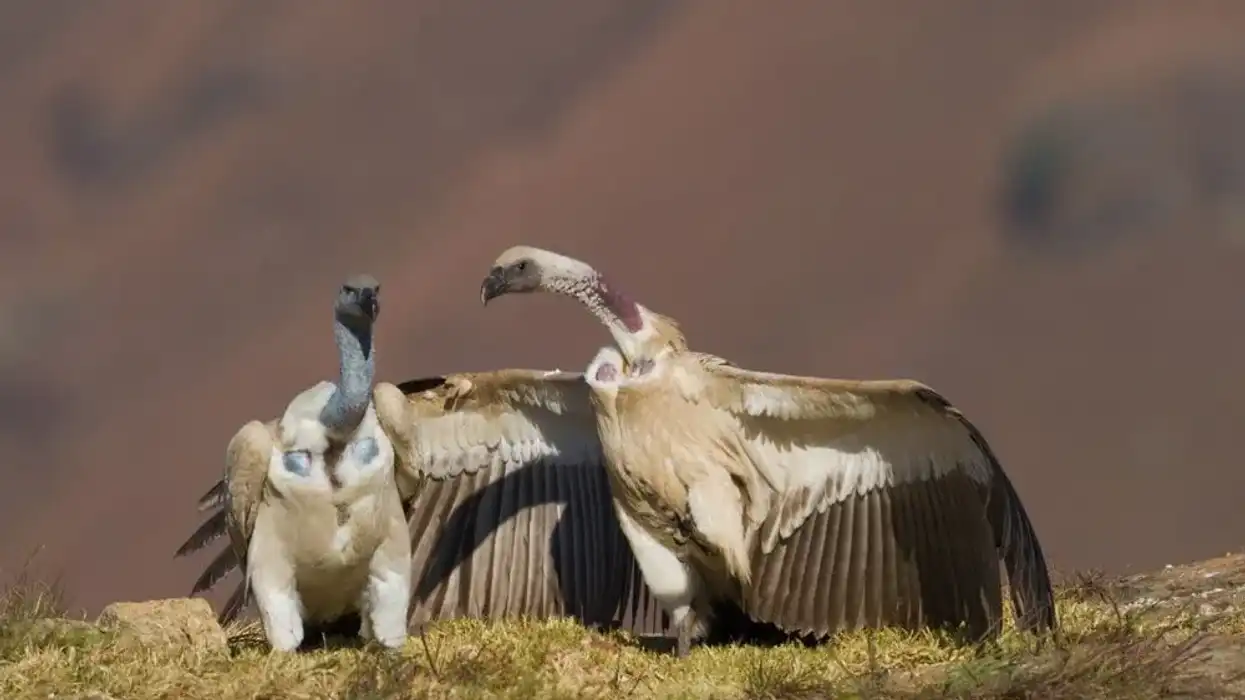The dark-capped bulbul (Pycnonotus tricolor) is a member of the family Bulbul. This bird is classified in the order of Passerine birds and the order Passeriformes.
Other names for a dark-capped bulbul include the black-eyed bulbul, brown-capped bulbul, garden bulbul, Kenya Highlands dark-capped bulbul, Ngami dark-capped bulbul, tricoloured bulbul, and white-eared geelgat.
The dark-capped bulbul is widely present throughout southern Africa especially in eastern, central, south-eastern Africa. As this bird is the ubiquitous resident in South Africa and regular breeder in the African region, it is also known as the common bulbul or the common garden bulbul.
Another name this bird is known by is the black-eyed bulbul due to its black dark eyes. This bird is very stunning to look at and is an art of nature with its dark-brown, gray-brown, or gray-yellow body with yellow vent and black dark crest at the top of the head and deep black eyes.
Children are often fascinated by birds and this one is a very common bird in the South African region they can spot and even learn about.
To know more about this fascinating bird and its characteristics, read on. If you want to learn more about the bulbul family, you should check out facts about the common bulbul and cape bulbul.
Dark-Capped Bulbul Interesting Facts
What type of animal is a dark-capped bulbul?
The dark-capped bulbul (Pycnonotus tricolor), also known as the common bulbul or black-eyed bulbul, is a bird.
What class of animal does a dark-capped bulbul belong to?
The dark-capped bulbul is a black-eyed bulbul belonging to the class Aves.
How many dark-capped bulbuls are there in the world?
Although the exact number of dark-capped bulbuls in the world is not known, this particular species of bulbul, the dark-capped bulbul, is abundantly found in South Africa and is very common in this area.
Where does a dark-capped bulbul live?
The dark-capped bulbul (Pycnonotus tricolor) is widely found in the eastern, central, and south-eastern parts of South Africa. This bird can be found widely across Sub-Saharan Africa and also south to southern Africa.
Also, this bird lives in southern African countries and regions like Zimbabwe, Mpumalanga, the Limpopo Province, northwestern Botswana, Mozambique, the Democratic Republic of the Congo, central Kenya, the Caprivi Strip, the Eastern Cape, eastern Cameroon, South Sudan, southern and northern Namibia, KwaZulu-Natal, and northern and western Zambia.
What is a dark-capped bulbul's habitat?
The habitat of a dark-capped bulbul or common bulbul consists of well-vegetated areas where there is an adequate supply of bushes and fruiting trees.
This bird can be spotted frequently in dry landscapes such as parks, urban gardens, plantations, coastal bushes, riverine bushes, woodlands, forest edges, montane scrub, mixed farming habitats, orchards, exotic thickets, oases, and often has its habitat around human settlements.
Who do dark-capped bulbuls live with?
The dark-capped bulbul (Pycnonotus tricolor) is a conspicuous bird that often tends to sit only on the top of the bush and is usually seen in pairs or small groups.
How long does a dark-capped bulbul live?
The lifespan of common bulbul birds is about 11 years on average which is very similar to house finches.
How do they reproduce?
Dark-capped bulbul birds are monogamous and mate for life. The dark-capped bulbul (Pycnonotus tricolor) has been known to breed with African red-eyed bulbuls and the Cape bulbuls as well.
Females build a cup nest to lay their eggs in which is often concealed with the foliage of small trees, dry grass, or shrubs. The foliage is made of leaves, dry grass, and twigs.
The nest is extremely thick-walled and fairly rigid. There are two to three eggs in a typical clutch and they have an incubation period of about 12-15 days. During the incubation period, the male regularly brings food to the female bird in the nest.
The egg-laying season for these birds is around April to July and peaks around September to December. Young hatchlings stay in the nest for about 11-16 days.
What is their conservation status?
Their conservation status is Least Concern according to conservation organizations like the International Union For Conservation Of Nature.
Dark-Headed Bulbul Fun Facts
What do dark-capped bulbuls look like?
The dark-capped bulbul has grayish-brown plumage on its upper part, which extends to the chest and has whitish brown plumage on its underparts. This bird has a dark head with a pointy crest on top of the head.
The back of the head of the dark-capped nulbul merges into the dark-brown back of the bird. The chin of the bird is also blackish.
The underparts, although grayish-brown, have a bright yellow shad around the vent. This bright yellow color is very distinguishable. The bills, legs, head, and feet are all black but the eyes are dark-brown, resembling black.
They also have dark eye-ring around them which is not easily visible. The bill is thin and short and has a down curving upper mandible.
Both sexes look similar, but males are a little larger than females. The dark-capped bulbul can be distinguished from red-eyed bulbul birds by not having the red eye ring.

How cute are they?
Dark-capped bulbul birds are very cute with their dark brown eyes and gray-brown bodies and a dark pointy crest on the top of the head, even though they are not as colorful as pine warblers.
How do they communicate?
Nothing really is known or documented about the communication between the birds of this species. However, a dark-capped bulbul's call sounds similar to 'be-quick be-quick' along with a 'doctor-quick doctor-quick'.
How big is a dark-capped bulbul?
The dark-capped bulbul is about 7-7.8 in (18-20 cm) in length and has a long tail. The size of the birds of this species is similar to that of other bulbuls. Swallow-tailed kites are thrice as big as these bulbuls.
How fast can a dark-capped bulbul fly?
The speed of the flight of this species is unknown, but their flight is similar to that of woodpeckers and is a bouncing flight.
How much does a dark-capped bulbul weigh?
The dark-capped bulbul weighs around 1.4 oz (39 g) which is comparable to the weight of the fox sparrow.
What are the male and female names of the species?
The male bird and the female bird of this species are known by the same scientific name, P. tricolor.
What would you call a baby dark-capped bulbul?
A baby dark-capped bulbul is known as a hatchling.
What do they eat?
The dark-capped bulbul diet includes a variety of fruits, seeds, nectar, petals, and arthropods. They usually forage in groups and use techniques like plucking fruits from trees and probing flowers for nectar to get their diet. They hunt for spiders and hawk flying insects.
Are they friendly?
Male birds of this species are very territorial and will use techniques like lowering their head and wings and chasing any intruder out of their territory.
Would they make a good pet?
This species has been kept as pets for generations now and has proven to be very good pets.
Did you know...
The dark-capped bulbul has been the most common host for the brood parasite, Jacobin cuckoo.
The birds of this species are very active and very noisy.
What does the dark-capped bulbul's call sound like?
The call of dark-capped bulbuls is a loud and sounds almost like 'be-quick be-quick' along with a 'doctor-quick doctor-quick'.
Do bulbuls mate for life?
Bulbuls, especially dark-capped bulbuls, do mate for life and are fairly monogamous.
Here at Kidadl, we have carefully created lots of interesting family-friendly animal facts for everyone to discover! Learn more about some other birds from our Red-vented bulbul facts and bulbul facts pages.
You can even occupy yourself at home by coloring in one of our free printable bird coloring pages.









